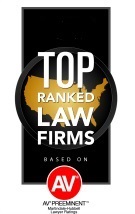Cal/OSHA’s Emergency COVID-19 Regulations for the Workplace -Effective Immediately
Authors: Employment Law Team
Updated: 12/04//2020
Cal/OSHA’s Emergency COVID-19 Regulations For The Workplace – Effective Immediately.
Late last month, Cal/OSHA adopted emergency regulations related to COVID-19 in the workplace. These new regulations were formally approved this Monday (November 30, 2020) and became effective immediately.
The new emergency COVID-19 regulations apply to all employers in California with three limited exceptions. These regulations do not apply to: (1) employees working from home, (2) employers with only one employee without contact with any other person, and (3) employees covered by Cal/OSHA’s Aerosol Transmissible Diseases standard (e.g. certain laboratories, healthcare facilities, etc.). For most employers the first exception will be the most significant, creating even more pressure on employers to allow employees to work from home, and thereby avoid some of the more onerous regulations.
All other California employers are now required to establish, implement, and maintain a COVID-19 Prevention Program (“CPP”). The CPP may be integrated into the employer’s existing Illness and Injury Prevention Program (“IIPP”) or it may be a separate document. The CPP must include at least the following elements:
- A system for communicating information to employees about COVID-19 prevention procedures, testing, symptoms and illnesses, and a system for employees to report COVID-19 exposures without retaliation;
- Identification and evaluation of COVID-19 hazards;
- An effective procedure to investigate and respond to COVID-19 cases in the workplace;
- Correction of COVID-19 hazards, which includes correcting unsafe or unhealthy conditions, and providing effective training and instruction;
- Procedures to ensure workers stay at least six feet apart from other people, if possible;
- Other personal protective equipment requirements, such as solid partitions when necessary;
- New reporting and recordkeeping requirements, including employees’ access to the CPP;
- Positive COVID-19 case and illness recording requirements;
- Exclusion of COVID-19 exposed or positive workers from the workplace requirements, and measures to protect pay and benefits; and
- New return to work criteria for employees that recovered from COVID-19.
Employers are also now required to make testing available to employees and notify public health departments of COVID-19 outbreaks in the workplace. There are also specific requirements for infection prevention related to employer-provided housing and transportation.
Several additional requirements apply where an employer experiences a separately defined “outbreak.” And new protocols are mandated for employees who have either tested positive or been “exposed” to an employee who tested positive, which also is newly defined.
The above is thus only a summary of the new regulations. There are very detailed and often onerous requirements for each of the above sections. Some of the exceptionally notable requirements are:
Employers must offer, and pay for, COVID testing during working hours, to all employees who may have been exposed to a COVID outbreak in the workplace;
Employers cannot require a negative COVID-19 test for an employee to return to work;
Employers must exclude from the workplace any employee that tests positive for COVID-19 or was exposed to COVID-19, until the employee meets certain return-to-work criteria, and
Employers must continue and maintain the excluded employee’s earnings, seniority, and benefits during the employee’s exclusion, if the employee is otherwise able and available to work. This is a new form of paid leave, with two exceptions: 1) the employee is unable to work for reasons other than protecting persons at the workplace from possible COVID-19 transmission, or (2) if the employer demonstrates the exposure was not work-related.
Cal/OSHA appears to acknowledge the burden imposed by these new emergency regulations. In its FAQ, Cal/OSHA notes that “[m]any of the provisions of these regulations have already been required under employers’ IIPP, including the requirement to identify and address hazards, use of face coverings, and physical distancing.” Cal/OSHA provides its enforcement personnel some leeway, as they will consider “an employer’s good faith efforts in working towards compliance.” But certain requirements, such as eliminating hazards and implementing testing requirements during an outbreak, are considered essential.
Cal/OSHA is expected to hold a stakeholder meeting later this month, that will include industry and labor representatives to review the emergency regulations and solicit feedback. Possible changes may come from these meetings.
We expect more changes and clarifications to these emergency COVID-19 regulations as we enter the new year. These emergency standards will remain in effect for 180 days unless renewed, withdrawn, or replaced.
Employers should act now to comply. Even employers that have adopted COVID prevention plans earlier this year need to review these new emergency regulations and modify or add to their prevention plans as required/needed. Our Firm is monitoring these developments closely. Please call us if you have questions/concerns regarding these regulations.
The text of the new regulations can be found here https://www.dir.ca.gov/oshsb/documents/COVID-19-Prevention-Emergency-txtbrdconsider.pdf
***The information provided in this article is for informational purposes only and not for the purpose of providing legal advice. You should contact your attorney to obtain advice with respect to any particular issue or problem.***


